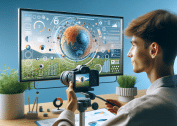In a world driven by calendars, checklists, and productivity apps, a different trend is gaining momentum: engaging in a thinking ritual without a plan. Rather than planning each minute, this approach uses small, consistent cues and unstructured moments to foster creativity, clarity, and insight—without the pressure of predefined outcomes. Think of it as giving your mind permission to wander, intuit, and uncover ideas naturally.
This concept aligns with growing interest in deep work, micro-incubation, and mental wellness. Creative professionals, entrepreneurs, and even students are recognizing the power of thought practices that don’t always lead to immediate action—but that plant the seeds for bigger breakthroughs.

Why a Thinking Ritual Without a Plan Works
1. Supports Mental Incubation
Significant research shows that stepping away from active work stimulates idea generation. For instance, Schooler et al. (2012) found that participants who engaged in undemanding tasks—like letting their mind wander—performed better on creative idea generation tests compared to focused sessions[^1].
These incubation periods give your subconscious mind a chance to work behind the scenes. A thinking ritual isn’t about solving problems directly; it’s about creating space where ideas can percolate.
2. Rituals Prime the Brain
Adding a consistent cue to initiate these pauses—such as lighting a candle, taking a short walk, or brewing herbal tea—builds an emotional association with reflective thinking. Behavior researcher Michael Norton explains that rituals give meaning and context to simple actions, helping you engage fully without overthinking[^2].
3. Reduces Decision Fatigue
Productivity expert Cal Newport highlights how brief rituals serve as gentle transitions from task work to mental rest. By signaling an end to one mode and a beginning of another, thinking rituals save your mental energy for what matters most.
How to Build Your Thinking Ritual
Here’s a six-step guide to designing a thinking ritual without a plan, easy to adopt and flexible.
1. Identify Your Timing
Choose a daily window—first thing in the morning, mid-afternoon, or just before dinner—where you can consistently carve out 10–20 minutes. Treat it as a non-negotiable pause in your schedule.
2. Add a Small Ritual Cue
Pick one simple act that marks the start:
- Brewing a cup of tea
- Lighting a scented candle
- Ringing a small bell
This cue trains your brain to shift into reflective mode.
3. Embrace Open-Ended Thinking
During the ritual, release any agenda. No task lists, no pressure to solve problems. You might find yourself wandering mentally—letting thoughts drift from personal reflections to snippets of ideas. That’s exactly what builds creativity.
4. Anchor Gently
Keep a notebook, index card, or voice memo near you—not for planning, but for capturing any insights that surface. The goal is to honor your thinking, not to force output.
5. Close Thoughtfully
After your session, spend 1–2 minutes noting what stood out—a line of thought, a metaphor, or a simple feeling. This reflection provides a gentle wrap-up.
6. Review Periodically
Every week or month, revisit your ritual notes. Some insights may spark projects over time—this is how unstructured thinking generates long-term value.
Examples of Unplanned Thinking Rituals
Solo Walks
Stanford research shows walking boosts creative output by nearly 60% over sitting—and most of this comes from unguided thinking[^4]. Many innovators anchor their daily walks as moments of spontaneous insight.
Shower Moments
Everyday activities like showering or washing dishes can trigger deeper thinking. Psychologist Thomas Bouchard notes that these repetitive, mindless tasks allow subconscious problem-solving[^5].
Ambient Coffee Shop Time
A study by Mehta et al. (2012) found that moderate background noise—around 70 decibels—enhances creative thinking by increasing attention dissociation[^6]. A café ritual can be your thinking ritual without a plan.
Common Pitfalls & How to Avoid Them
- Ritual becomes obligation: If it feels like a chore, tweak the cue—maybe switch from candle to headphones with ambient music.
- Note–taking turns into planning: Remind yourself: the goal is not to start a task, but to record loosely. A single word or doodle is enough.
- Lack of follow-through: Set a monthly reminder to browse your notes. Over time, hidden ideas may emerge for real-world value.
Aligning the Ritual with Hot Trends
Remote Work Creativity
As remote work becomes ubiquitous, unstructured thinking breaks free of rigid home routines. A coffee walk or window seat ritual can mark a mental transition—helping remote workers recharge and reframe challenges.
AI-Assisted Creativity
AI tools like ChatGPT are transforming brainstorming. But the best questions often spring from organic thinking sessions. Combining algorithmic prompts with your unplanned insights can lead to richer, more intuitive outcomes.
Mental Health & Resilience
Mindfulness and therapy trends reinforce the value of giving the mind space. A thinking ritual doubles as self-care—it complements broader emphasis on mental well-being and sustainable productivity.
From Ritual to Results: A Month-by-Month Example
- Week 1: Establish your ritual. Choose morning tea and light a candle. Let thoughts drift.
- Week 2: Notice new themes emerging—follow-ups? questions?
- Week 3: Begin capturing words or doodles after each session.
- Week 4: Review notes, identify recurring patterns, and select one insight to explore further.
Repeat the cycle each month. Over time, your seemingly aimless moments become a source of real insight.
Conclusion
A thinking ritual without a plan doesn’t aim to maximize output instantly. Instead, it cultivates a mindset where creativity and clarity emerge naturally. By using simple cues, protecting unstructured time, and gently noting insight, you tap into a powerful mental incubator—a gift in our task-driven world.
In a highly-planned environment, these rituals bring balance and innovation. They align with trends in mental health, remote work, and AI-assisted creativity. Try it yourself: choose a time, add a small signal, let your mind wander, capture the spark—and then let it rest. Your best ideas may come when you least expect them.
References
- Schooler, J. W., et al. (2012). Inspired by Distraction: Mind Wandering Facilitates Creative Incubation. Psychological Science.
https://journals.sagepub.com/doi/10.1177/0956797613485600 - Norton, M. (2024). “The surprising science of rituals.” Good Life Project.
https://www.goodlifeproject.com/podcast/the-surprising-science-of-rituals-how-everyday-actions-shape-our-lives-michael-norton/ - Newport, C. (2014). Drastically Reduce Stress with a Work Shutdown Ritual.
https://calnewport.com/drastically-reduce-stress-with-a-work-shutdown-ritual/ - Oppezzo, M., & Schwartz, D. L. (2014). Walking Improves Creativity. Stanford News.
https://news.stanford.edu/2014/04/24/walking-vs-sitting-042414/









